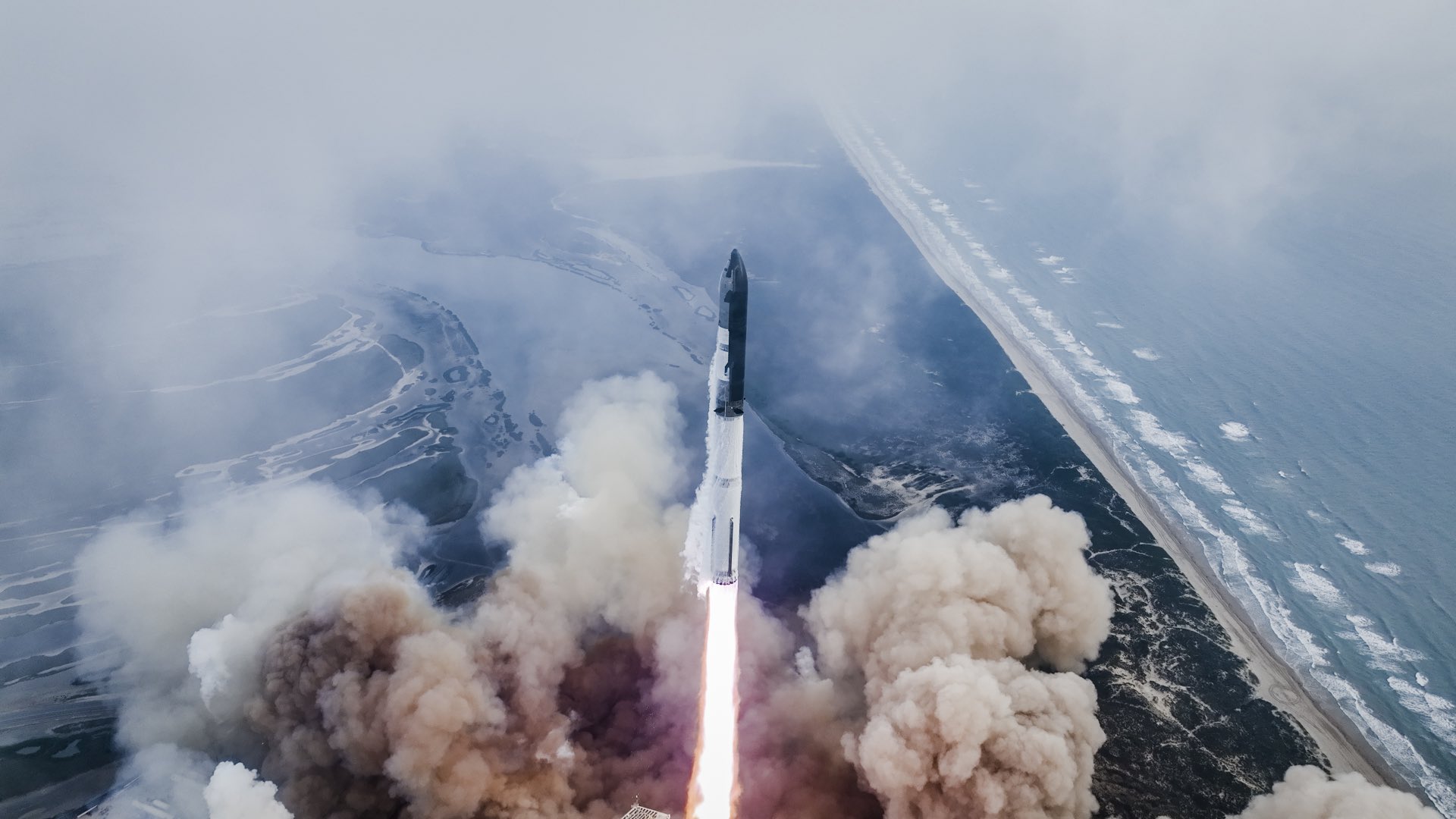Watch shock waves ripple from SpaceX's giant Starship rocket during 3rd test flight (video)
A slow motion video released by SpaceX shows just how powerful Starship's engines are.
The incredible power SpaceX's Starship megarocket can be visualized in a new video of the rocket's third test flight.
On March 14, SpaceX's massive Starship vehicle — the world's largest and most powerful rocket — lifted off from the company's manufacturing and test launch facilities near Boca Chica Beach at 9:25 a.m. EDT (1325 GMT). During the launch, shock waves propagate from the rocket in a stunning new slow motion video.
Large clouds of smoke billowed out around the two-stage spacecraft, consisting of the reusable Starship cruise vessel mounted atop its Super Heavy rocket booster, as it lifted off the ground. Traveling faster than the speed of sound, the 400-foot tall (122 meters) rocket sent shock waves through the air as it accelerated skyward.
Related: Relive SpaceX Starship's 3rd flight test in breathtaking photos

The launch, designated Integrated Flight Test-3 (IFT-3), represents the third test mission for the fully stacked Starship. Although neither the Starship vehicle nor its Super Heavy booster survived all the way through to their intended splashdown, the spacecraft achieved several of its key goals during the flight, including reaching orbital speed for the first time.
The Super Heavy rocket booster is powered by 33 first-stage Raptor engines, which ignite in a fiery blaze in the slow-motion video. The booster successfully separated from the rocket's 165-foot-tall (50 m) upper-stage about 2 minutes 45 seconds after liftoff. However, Super Heavy's engines did not relight as planned for its landing burn above the Gulf of Mexico, leading to the loss of the booster.
After separation, Starship's upper stage entered a suborbital coast phase as it soared above Earth, demonstrating the first test of the spacecraft’s ability to open and close its payload door in orbit, along with the transfer of super-cooled rocket propellant from one tank to another during spaceflight. However, SpaceX lost contact with Starship during reentry.
Get the Space.com Newsletter
Breaking space news, the latest updates on rocket launches, skywatching events and more!
Despite the loss of both the Starship vehicle and its Super Heavy booster, the spacecraft exceeded its past two test flights, IFT-1 and IFT-2, which were both cut short by explosions minutes after launch.
SpaceX has shared plans to conduct at least six more test flights of Starship this year, with the next test slated to take place as soon as May, pending regulatory approval following the investigation of IFT-3.
Join our Space Forums to keep talking space on the latest missions, night sky and more! And if you have a news tip, correction or comment, let us know at: community@space.com.

Samantha Mathewson joined Space.com as an intern in the summer of 2016. She received a B.A. in Journalism and Environmental Science at the University of New Haven, in Connecticut. Previously, her work has been published in Nature World News. When not writing or reading about science, Samantha enjoys traveling to new places and taking photos! You can follow her on Twitter @Sam_Ashley13.
-
SubSailor ReplyDC8Captain said:So where is the video link in the article. I read the article twice.
Disable your ad blocker and it will show up. -
Ryan F. Mercer Shock waves? This is the same trick as when you wiggle a pencil up and down and it looks like its bending. The video is frames per second and the intense vibrations are causing a similar effect. Honestly, this is a stupid thing to try and get people excited about anyway. It's like calling an uber, having someone show up in a Lamborghini, and then getting all excited about the color changing decal on the steering wheel. It's a giant rocket with 33 freaking engines and looks like it wants to bust a cap in the moons ass. Mad respect, MFs!Reply -
billslugg This is vibration moving a camera around. The only shock waves are down at the bottom by the engines.Reply -
HobartStinsonian ALL rocket engines and many gas turbine engines form shock diamonds in the exhaust. It’s a normal part of underexpanded supersonic free jet flows. Nothing against the immense power of Starship booster. It’s awe inspiring.Reply










